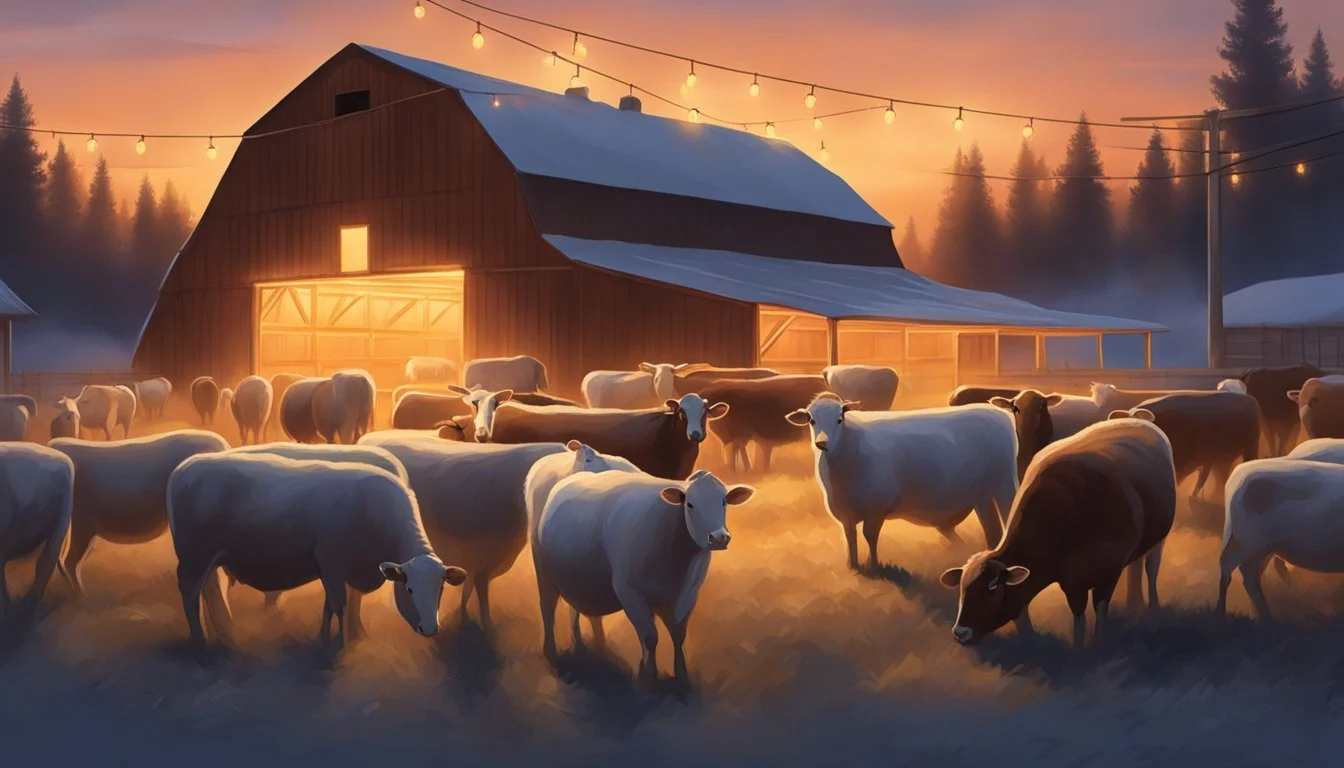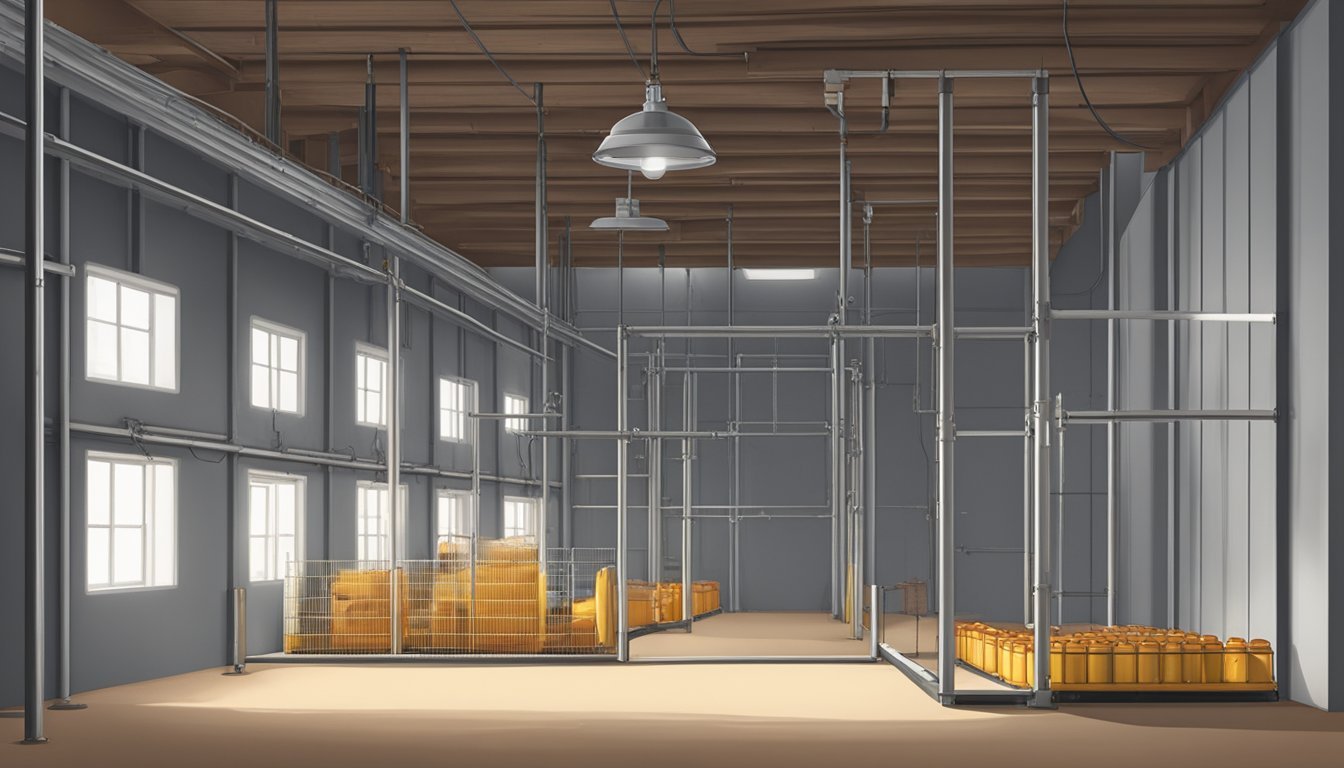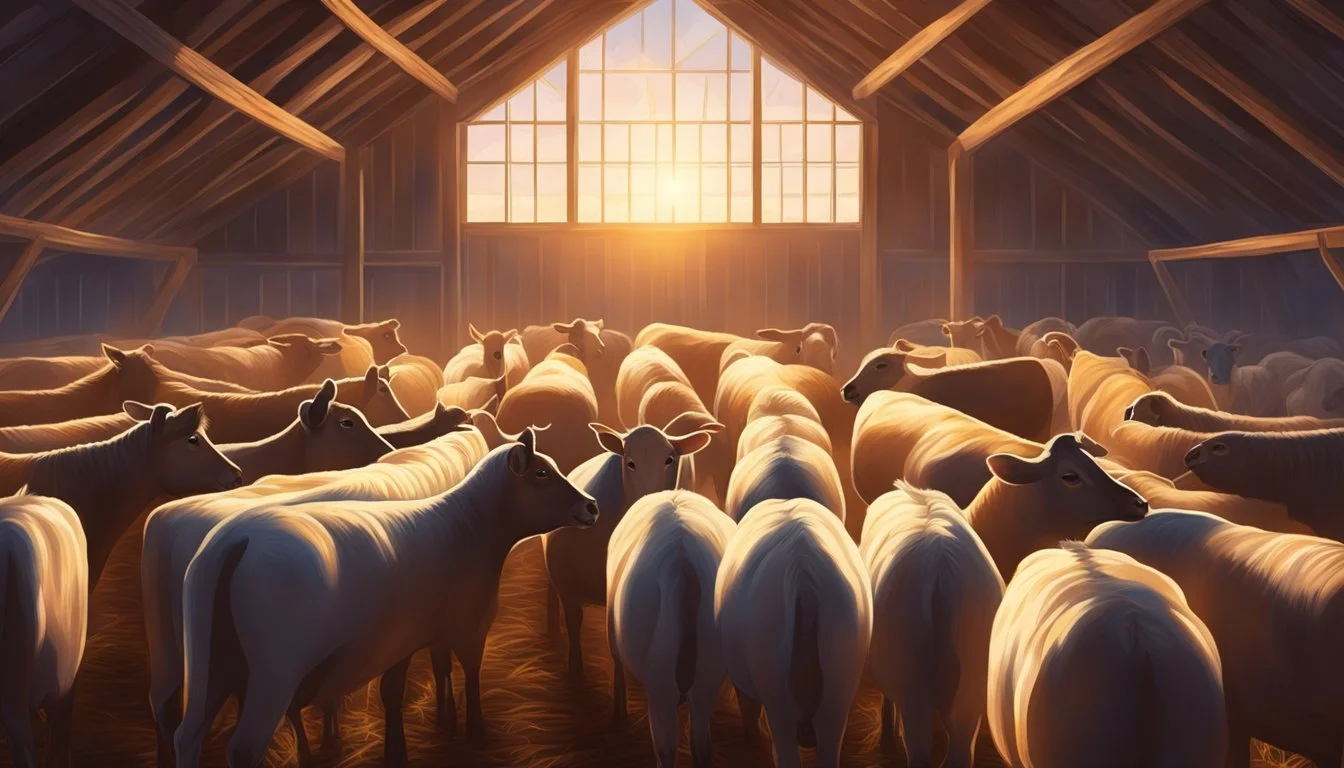The Ultimate Guide to Using Heat Lamps for Keeping Young Livestock Warm
Essential Tips for Homesteaders
Raising young livestock is a vital part of homestead farming, and providing proper care during their early stages is critical for their survival and growth. One effective method to ensure the warmth and comfort of newborn animals is the use of heat lamps, which serve as a supplemental heat source in colder environments or during the chillier parts of the year. Heat lamps can mimic the nurturing warmth of a mother, which is essential for young animals who are unable to regulate their body temperatures effectively.
However, the use of heat lamps comes with inherent risks and responsibilities. It's imperative for farmers and homesteaders to understand the correct protocols to minimize hazards such as fires, which can result from improper use. Optimal safety is achieved through diligent maintenance, appropriate selection of equipment, and strategic placement of the lamps to avoid contact with flammable materials or the animals themselves. Ensuring that all electrical components are in good working order and that lamps are secure and placed at the correct distance from the animals will help prevent accidents and injuries.
The goal of using heat lamps is not just to create a warm environment, but to do so in a manner that is safe and energy-efficient. This involves selecting the right type of bulb, one that provides adequate heat without excess wattage, and adhering to the recommended guidelines for installation and use. By integrating heat lamps carefully into livestock care practices, homesteaders can create a nurturing space for their young animals to thrive.
Understanding Livestock Heating Needs
When maintaining the well-being of young livestock, understanding their heating requirements is crucial. Spring and winter present particular challenges due to the potential for frigid temperatures, which can increase the risk of hypothermia and impact the survivability of vulnerable animals.
Newborn animals have a higher susceptibility to cold due to their lower body fat and less developed thermoregulatory systems. The temperature at which an animal must expend extra energy to keep warm is known as the Lower Critical Temperature (LCT). For young livestock, the LCT is higher than that of mature animals, meaning they feel the cold more intensely and require additional heat.
It's essential to adjust the ambient temperature in barns or shelters to meet their needs. An animal's body size, coat thickness, and overall health determine its specific LCT. For example:
Lambs & Kids: Require warm, draft-free environments particularly in the first 48 hours.
Calves: May need additional bedding and wind protection to maintain body heat.
Barn managers should monitor temperature fluctuations diligently, as young animals can neither regulate their body temperature as effectively as adults nor communicate distress. Providing supplemental heat can be a saving grace but must be managed professionally to avoid fires. Heat sources should be installed safely, away from flammable materials and with fail-safes in place to minimize risk, ensuring the continuation of healthy, thriving livestock on the homestead.
Types of Heat Lamps for Livestock
When selecting a heat lamp for young livestock, it's crucial to choose a heavy-duty, high-quality product. The right lamp safeguards the well-being of animals by providing consistent warmth without posing safety risks.
Choosing the Right Heat Lamp
When choosing a heat lamp for your livestock, look for a product that suits the specific needs of your animals and the environment in which they are housed. It’s imperative to consider the wattage; typically, 250W bulbs are sufficient and safer. Heavy-duty construction ensures the lamp can withstand the demanding conditions of a livestock environment. Also, verify whether the lamp is intended for indoor or outdoor use, depending on your requirements.
Features of High-Quality Heat Lamps
High-quality heat lamps possess certain features that enhance their safety and efficacy:
Bulb Construction: They should have thick glass bulbs that are less likely to shatter and can withstand the environment of a barn or outdoor area.
Protective Guard: A heat lamp guard or wire cage prevents contact with flammable materials.
Secure Mounting: Choose heat lamps that can be securely attached with a chain or similar non-flammable hanger to avoid accidental falls.
Always ensure that the product you select is designed for the purpose of warming livestock and comes with safety features to minimize fire risks.
Setting Up Heat Lamps in Barns
Setting up heat lamps in barns requires careful attention to the placement and security of the fixtures to ensure the safety and wellbeing of young livestock.
Proper Placement of Heat Lamps
The optimal placement of heat lamps within barns is critical for maintaining an even distribution of warmth. These lamps should be positioned directly above the area where the young livestock congregates, generally at a height that ensures a heat zone large enough to accommodate the animals yet close enough to be effective. It's paramount that lamps are kept far away from any flammable materials to prevent fire hazards.
Height from Ground: Generally, lamps should be hung 18 to 24 inches above the animals.
Distance from Walls: At least 3 feet away from walls or any potentially flammable surfaces.
Securing Heat Lamps with Chains and Ropes
Securing heat lamps properly is essential to prevent them from falling or being knocked down by animals. The use of a sturdy chain or non-flammable rope is recommended.
Chains: Ideal for hanging heat lamps as they offer strength and durability. They should be paired with a locking chain connector to avoid dislodging.
Installation tip: Ensure that the connection point on the barn's structure can support the weight of the lamp and chain.
Ropes: If ropes are used, they must be non-flammable and capable of handling significant weight without stretching or fraying.
Both chains and ropes should be inspected regularly for signs of wear and tear to maintain the integrity of the installation.
Minimizing Fire Risks in Livestock Housing
When utilizing heat lamps to warm young livestock, it is crucial to prioritize fire safety in barn structures. Focused attention on potential hazards, effective preventative measures, and appropriate safety equipment is essential to minimize the risk of barn fires.
Recognizing Potential Fire Hazards
Farmers should regularly inspect barn areas for signs of arc faults, loose bulb sockets, and exposed wiring which are prime fire hazards. Special attention must be paid to areas where bedded straw and dust accrue, as these materials are highly combustible. It’s imperative to clean cobwebs and remove dead insects or broken bulbs that could ignite with a single spark.
Implementing Preventative Measures
Proactive safety considerations should encompass:
Regular Inspections: Ensuring electrical outlets and heat lamps are devoid of wear or damage.
Installing Ground Fault Circuit Interrupters (GFCIs): Prevents electrocution and electrical fires.
Secure Heat Lamp Fixtures: Use heavy-duty, durable fixtures that minimize the chance of a lamp falling onto flammable bedding.
Temperature Regulation: A barn temperature monitoring system helps maintain appropriate warmth without reliance on constant heat lamp use.
Using Barn Fire Safety Equipment
Every barn should be equipped with functional fire extinguishers—preferably ABC-rated—placed strategically for ease of access. Smoke detectors and a fire monitoring system present an initial line of defense, alerting to danger even at the earliest stages of fire development. Heeding farm and ranch safety standards encourages the adoption of these devices with regular maintenance schedules to ensure they remain operational.
Caring for Newborn Livestock with Supplemental Heat
Caring for newborn livestock involves maintaining a warm and safe environment, especially in regions where the climate poses challenges. Livestock producers employ various strategies, such as heat lamps and hot boxes, to ensure the well-being of lambs, piglets, and goat kids.
Maintaining Optimal Temperatures for Newborn Animals
Newborn animals, particularly lambs and goat kids, require a consistent and warm environment to thrive. The optimal temperature range for these animals is typically around 10°C (50°F) to prevent hypothermia and ensure healthy growth. Livestock producers should monitor barn temperatures and use supplemental heat sources like heat lamps judiciously to maintain these critical temperature thresholds.
Selecting the Appropriate Heat Lamp Power
Choosing the right heat lamp involves balancing sufficient heat output with safety to minimize fire risks. Heat lamps are available in various wattages, generally ranging from 100 to 250 watts. A common practice among producers is to:
Use a 150-watt bulb for a small number of animals.
Opt for a 250-watt bulb when a larger area or group needs warming.
It's important to securely hang the heat lamp with a non-flammable hanger, such as a chain with a locking connector, and to place it at a safe distance from flammable materials to reduce fire hazards.
Crafting a Hot Box for Critical Situations
In critical situations where a newborn animal is severely chilled, a hot box serves as an efficient and controlled heating method to rapidly warm and stabilize the animal's body temperature. Constructing a hot box involves:
Insulating a small enclosure with materials like polystyrene sheets.
Installing a heat lamp securely at the top, ensuring no direct contact with the enclosure's sides.
Monitoring the interior temperature closely to maintain a range between 25°C to 30°C (77°F to 86°F), which is vital for the weakest newborns.
A hot box should only be used temporarily until the animal is stable enough to return to a standard heated environment.
Heat Lamp Safety Tips for Adamant Farm and Ranch Managers
Ensuring the safety of young livestock is crucial, and that begins with proper heat lamp usage. This section provides farm and ranch managers with detailed safety protocols to maintain a secure and warm environment for their animals.
Routine Checks and Maintenance
Daily Inspection:
Bulbs: Verify that heat lamp bulbs are secure and functional. Replace thin-glass bulbs with high-quality ones to reduce shatter risk.
Lamp Guards: Confirm that heat lamps have protective guards to prevent contact with flammable materials.
Cords and Sockets: Inspect for any signs of wear or damage such as exposed wiring or loose sockets.
Cleaning:
Remove dust, cobwebs, and debris regularly from around the lamp and reflector to minimize fire hazards.
Enclosure Integrity:
Periodically check the pen for potential hazards such as twine or other combustibles that could pose severe risks if too close to a heat source.
Outdoor Use:
For outdoor lamps, ensure they are explicitly rated for exterior conditions to uphold farm and ranch safety.
Documentation:
Keep a log of inspections and maintenance to stay ahead of any safety considerations that may arise.
Educating Farm Workers on Heat Lamp Safety
Training Programs:
Develop comprehensive training for workers emphasizing the importance of routine inspections and what to look for in terms of potential hazards.
Safety Protocols:
Clearly communicate protocols for immediate action should a heat lamp problem arise.
Fire Safety Measures:
Ensure that all workers know the location of fire extinguishers and are trained to use them.
Emergency Preparedness:
Conduct regular drills simulating various scenarios, including how to act swiftly and with caution to mitigate risks and prevent potential accidents.
Managers bear the responsibility for cultivating a culture of caution and proactive safety on the ranch. By diligently applying these safety tips, they protect both their young livestock and their state of operations.
Agricultural Regulations and Ethics in Livestock Care
In managing young livestock, producers must adhere to a complex web of regulations which vary by state and country, and also ensure ethical treatment of animals, which has implications on health, productivity, and public perception.
Navigating State and Country-specific Regulations
State regulations may impose different requirements for livestock care, including the use of heat lamps. For example, in colder climates, certain states may have specific mandates on temperature minimums for young livestock. Producers should consult their local agricultural extension office for state-specific guidelines.
Country-specific regulations are overarching and often designed to streamline ethical livestock treatment. For instance, the United States Department of Agriculture (USDA) establishes federal guidelines for overall animal welfare, which affect how heat lamps should be implemented to ensure that livestock are neither too cold nor exposed to excessive heat.
State-specific guidelines: Check local agricultural extension office
Country-specific regulations: Follow USDA or equivalent guidelines
Ethical Considerations in Livestock Management
Ethical livestock management transcends compliance with regulations by considering the animals' well-being as paramount. When deploying heat lamps, producers must balance the necessity of warmth against potential hazards like burns or fires. Producers should also be mindful that their practices are humane and contribute positively to the animal's quality of life.
Balancing needs and risks: Use of heat lamps must be carefully managed
Humane treatment: Ensuring comfort while preventing harm




